Do you want to know the best east facing windows plants? Some plants, do not tolerate harsh lights or low lights, so it’s important to know what houseplants will thrive in your area, read on to find out:
What kind of light comes from the east-facing window?
Generally, eastern exposure means direct but mild sunlight in the morning when the sun rises and bright indirect light for the rest of the day. However, the size and type of windows you have, along with any obstacles like trees or other buildings, can significantly impact the quality and amount of light that passes through.
In other words, a room with eastern exposure implies a bright environment with half a day of direct and half a day of indirect lighting. But how bright the room with the east-facing window depends on the overall environment.
What plants do well on east-facing windows?
Bright indirect light with a few hours of mild, direct sunlight is ideal for many species of plants, especially those of tropical origin grown as indoor plants in the northern hemisphere. The sun’s rays enter the room at sharp angles and are not too intense, creating comfortable surroundings for most plants.
Most tropical plants in nature grow in the ground layers of tropical forests and enjoy the finely filtered light that reaches them through the canopy of tall trees. That is why the selection of plants for the east-facing window is vast and includes leafy and beautiful flowering plants.
1. Boston Fern (Nephrolepis Exaltata)
One of the plants that enjoy the morning sunlight from the east-facing window is the Boston fern or Sword fern, a widespread ornamental plant from the Lomariopsidaceae family. The fronds that grow directly from the ground are long, straight, or slightly arched and pointed. Each frond consists of small, alternately handed, one to three inches long leaves.
The Boston fern can grow up to 65 inches in height and the same width, forming a lush green sod. Sometimes, fronds grow up to three feet in length, so the plant looks better on an elevated plant stand or in a hanging basket.
The Boston fern needs a bright place without the direct sun in the hottest part of the day to thrive indoors. Therefore, place your Boston fern next to the east-facing window, water it moderately, and enjoy its lush, lacy greenery.
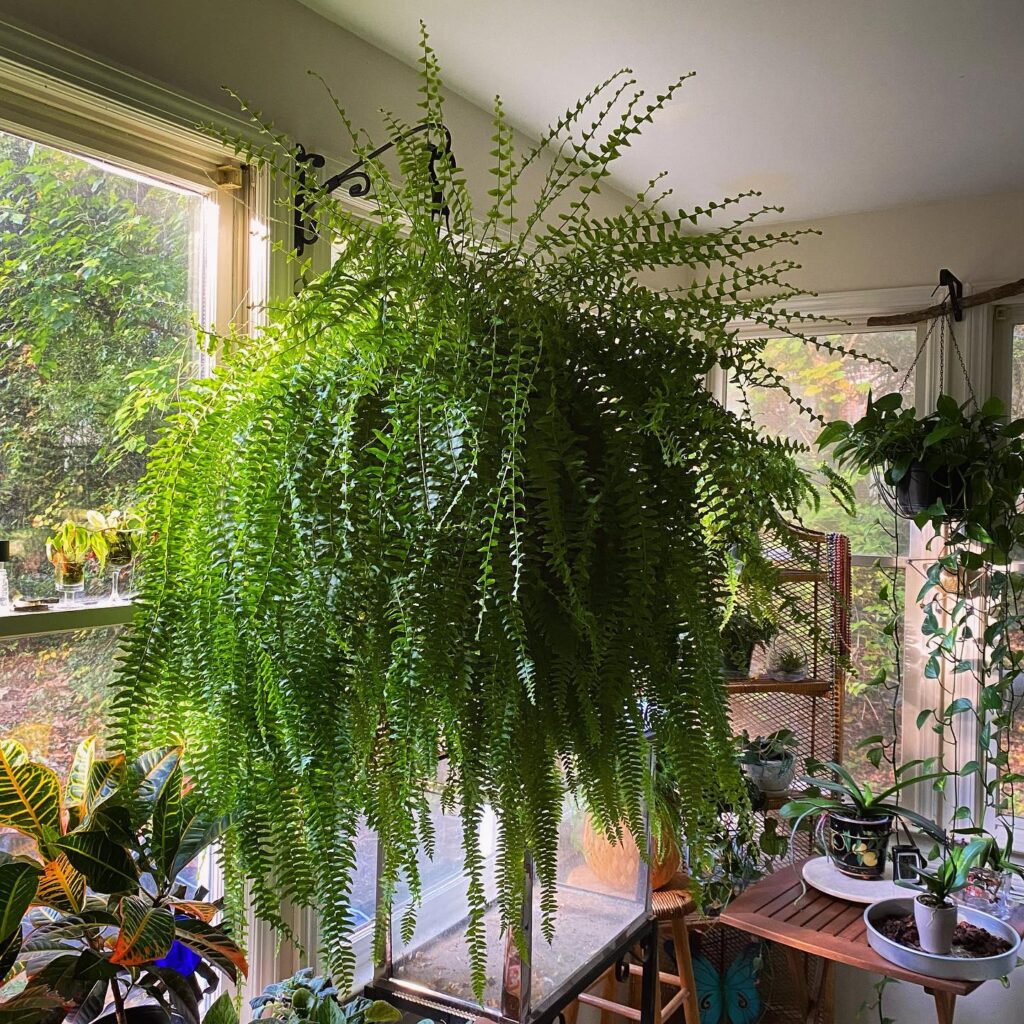
2. Prayer Plant
Prayer plant is a common name for several genera of plants from the Marantaceae family with the common feature of folding leaves as in prayer at the end of the day when natural light recedes.
The name Prayer plant most often refers to different plants of the Calathea genus, such as Chalatea makoyana or Peacock plant, and plants of the genus Marantha and Stromanthe.
However, all the Prayer plants grow in similar conditions regardless of their botanical differences: they like indirect light and moisture in the soil and the air.
Prayer plants’ delicate, beautifully variegated leaves are sensitive to the full sun because, like many other tropical plants, they grow in nature in the shade of tall trees.

Therefore, the east-facing windows with plenty of bright indirect lights offer just the right conditions for any Prayer plant.
3. Hoya Plant (Hoya Carnosa)
A beautiful flowering plant, tropical Hoya carnosa vine or Waxflower is undoubtedly one of the most beautiful east-facing window plants.
This evergreen plant has thick, fleshy, silvery-dotted dark green leaves, which are usually two to three inches long, and small, star-shaped flowers that are white with a pronounced red dot in the middle. The flowers have a light pink wax-like “coating,” gathered in a ball-shaped inflorescence with an enchanting scent.
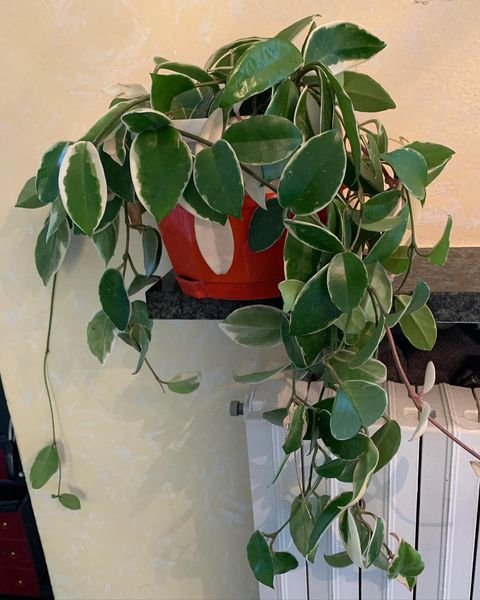
Since it is a climber, Hoya can be grown with support or in hanging baskets where the long stems dangle over the edge of the pot.
Although it can grow in a low light position, Hoya needs a lot of indirect lighting to bloom. The east-facing window is an excellent choice from spring to autumn, but it would not be harmful to move it to the west or south-facing window in the winter months to get more light necessary for flowering next season.
However, do not forget to return it to the east window because the direct sunlight of the south window can damage the leaves.
4. Angel Wing Begonia (Begonia x Coralline)
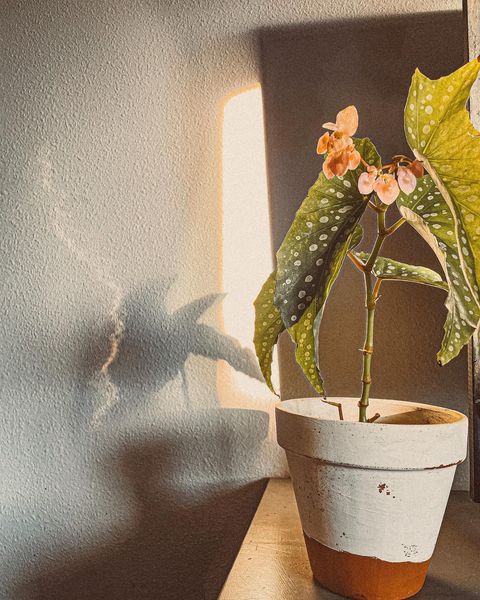
Angel wing begonia is a flowering species native to Brazil. It is named after the leaves of unusual shape that grow on upright, watery, and brittle stems.
Some species of Angel wing begonia are small shrubby plants for the windowsill, but there are also much larger ones that can grow as a shrub two and a half feet tall.
One of the most popular species is Begonia x corallinef, with dark green leaves gracefully highlighted by silvery-white spots.
In addition to decorative leaves, Angel wing begonia is a plant that will delight you with its small, deep pink flowers gathered in gracefully hanging clusters.
However, the plant will not bloom unless it receives sufficient bright indirect light. So it is to say, the west or east-facing windows are the perfect locations for the dotted beauty!
Yet, many will agree that this plant is equally beautiful at every stage, with or without flowers!
Like all begonias, Angel wing begonia needs a warm environment and a moderately moist substrate, so do not let the substrate dry!
5. Fiddle Leaf Fig (Ficus Lyrata)

Unique in the kingdom of Ficus, Fiddle leaf fig is an irresistibly small tree-like tropical plant with large violin-shaped leaves decorated with pronounced veins. The unusual shape of the leaves is the reason for its botanical name ‘Lyrata’ or, in translation, lyre.
This noticeable plant is native to West Africa, where it can grow independently and as an epiphyte on other plants to which it adheres to aerial roots.
As a potted plant, Fiddle leaf fig grows up to 10 feet in height and usually has the shape of a small tree with a central trunk. Yet, it grows slowly and takes 10 to 15 years to reach full size.
If you want your Fiddle leaf fig to thrive, it is essential to provide plenty of bright light, moderate watering, and misting every few days for growth.
Fiddle leaf fig reacts dramatically to insufficient amounts of light – leaf drop is the first sign that it does not like the position! However, it is equally sensitive to too much sun!
Therefore, place your Fiddle leaf fig next to the east-facing window, preferably without a sheer curtain, so that it has a few hours of morning sun and a lot of indirect sunlight the rest of the day.
6. Dumb Cane (Dieffenbachia)

Dumb cane, Dieffenbachia, or Leopard lily, is a plant whose popularity had not declined since the mid-19th century when it first arrived in Europe from the tropical regions of South America.
This shrubby plant has expressive, broad, green leaves with irregular white spots or stripes. Depending on the species, it can grow from 25 to 80 inches in height. In addition, it has an accelerated metabolism and can grow up to 10 inches per season. Hence, within two or three years, it reaches full size and forms an impressive variegated decoration noticeable in any space, whether it grows as a solitary plant or in combination with other houseplants.
Maintenance of Dieffenbachia is not demanding. However, it needs a warm environment, moist soil, and plenty of filtered light without direct sunlight to burn its thin and delicate leaves. Therefore, an east-facing window is where Dumb cane will feel quite comfortable.
Dumb cane belongs to the family Araceae and, like other plants from this family, contains poisonous calcium oxalate, which can cause serious health problems if it enters the digestive system.
Therefore it should be kept out of the reach of children or pets and handled with care. But on the other hand, it is also one of the most effective air purifiers.
7. Parlor Palm
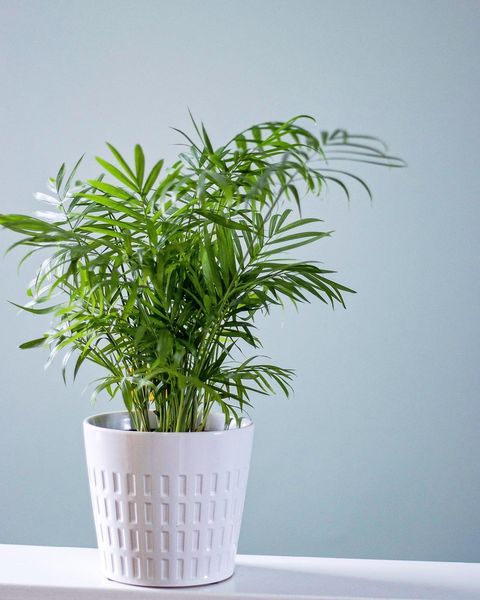
The elegant Parlor palm, native to Guatemala and Mexico, belongs to the Arecaceae family and is very similar to its relative, the slightly larger Areca palm or Butterfly palm, which is also often grown as a durable undemanding indoor palm.
Both species have vivid green filigree fronds on long stems that form a lush palm-shaped canopy with a distinctly exotic appearance.
Due to the size, Parlor palms are not windowsill plants, so you can place them next to windows with eastern exposure to grow in abundant filtered sunlight. North-facing windows also work well since the plant does not need much light to thrive.
In addition to moderate light, Parlor palm loves a humid environment, especially in winter when heating dries the air. Pebble tray or humidifier, however, easily handles this issue.
RELATED: Golden Leaves? 5 Reasons Why Your Majesty Palm Is Changing Color
8. Moth Orchid (Phalaenopsis)
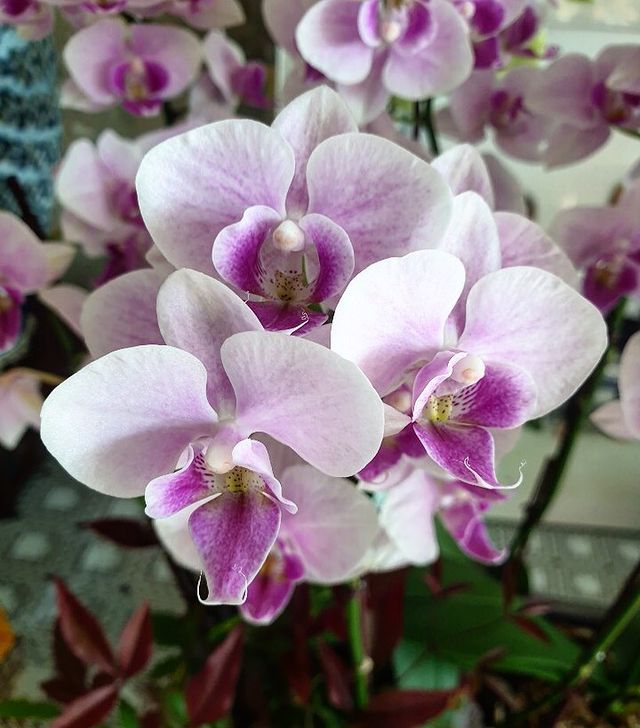
Not so long ago, orchids were a luxury available only to a small number of growers. However, thanks to large-scale hybridization, magical orchid flowers are present today in many homes worldwide. Among the purposely bred species for mass production, the most successful are Moth orchids or Phalaenopsis with large striking flowers on a long, slightly bent stem.
The secret of successful Moth orchid cultivation is the potting mix in which it grows and adequate lighting. As an epiphyte, the orchid does not need soil but grows in a particular ready-made mixture of 80% roughly cut bark and 20% sphagnum peat.
A light shade similar to the one below the forest canopy is ideal for growing orchids. That is why it is an excellent windowsill plant for east window exposure. In that position, it will get enough bright light in the morning with mild morning sun before it gets too strong to damage its ovate fleshy leaves.
Since they do not like direct sunlight, Moth orchids can thrive on a bright north-facing window, but they will bloom more diminutively than those on the east or west-facing window.
9. Bird’s Nest Fern (Asplenium Nidus)
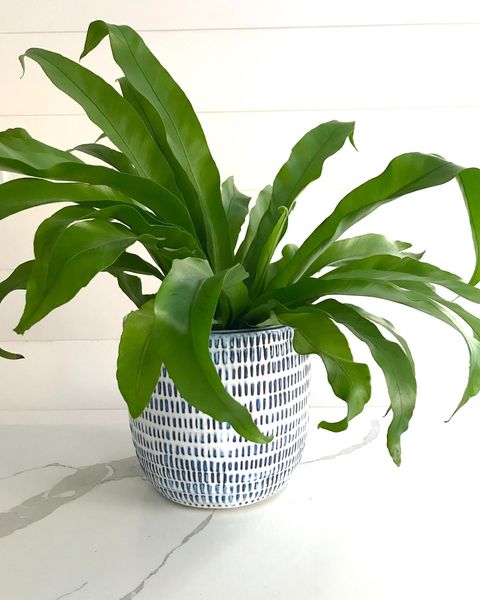
Another epiphyte on our list of best plants for east-facing windows is Asplenium nidus or Bird’s nest fern.
Like other ferns, it is a lover of the indirect light similar to their natural jungle habitat. It has tongued entire leaves with slightly wavy edges that grow from the middle to form a rich rosette.
Bird’s nest is an adaptable and hardy plant, but it needs lower temperatures of 59 to 64 F in winter because its leaves fall in an overheated room.
Also, moderately moist soil and regular misting of the leaves are obligatory care measures.
10. Dwarf Umbrella Tree (Schefflera Arboricola)
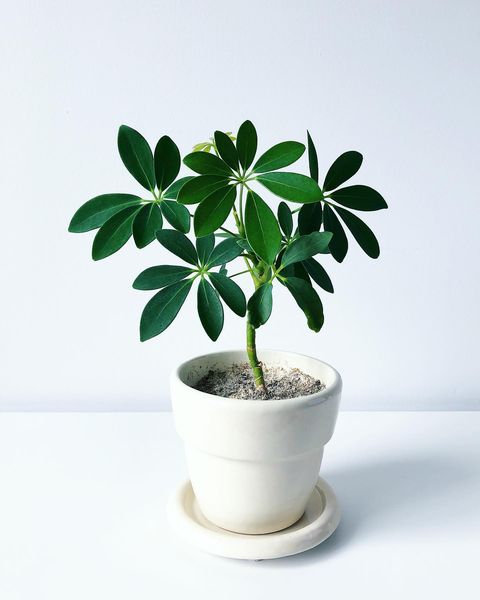
Schefflera, or Umbrella tree originates from Australia and New Zealand, where it grows as an evergreen shrub up to 17 feet tall.
The leaves are characteristic in shape, bright green, and streaked with cream or yellow. While young, the plant is very inconspicuous, with a few leaves out of proportion to the stems. When it grows over two feet, it produces leaves with six to eight lobes on long leaf stalks that drop gracefully, giving a beautiful look to the whole plant.
If you place it next to the east-facing window, the morning light will shine on its leaves, affecting faster growth. Do not place it next to a south-facing window without a sheer curtain as it is sensitive to full sun and prefers dappled light from east or west-facing windows.
11. Baby Rubber Plant (Peperomia Obtusifolia)
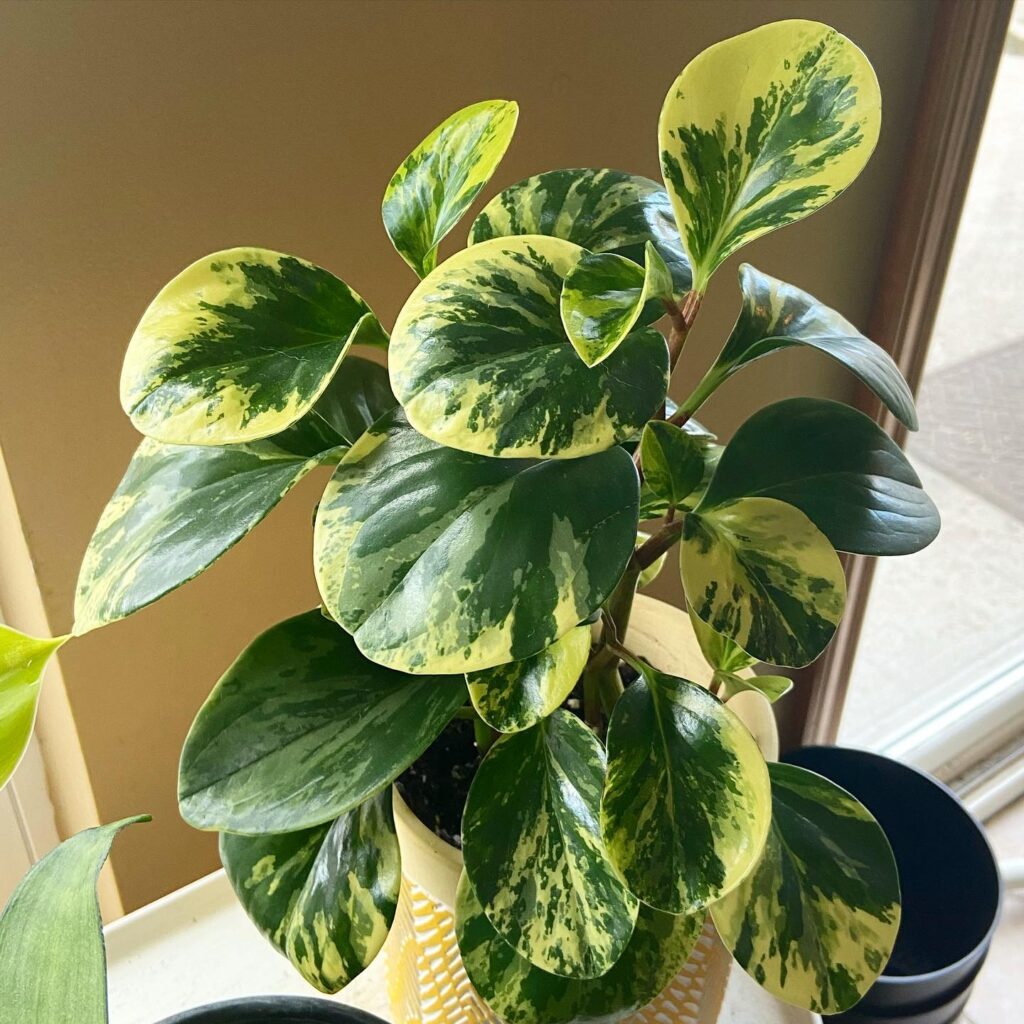
Peperomia, or |Baby rubber plant, is an evergreen perennial of the Piperaceae family, native to the rainforests of Central and South America.
It has winding and often flattened stems up to 12 inches long on which grow fleshy, shiny, ovate leaves with blunt tips, interspersed with yellow or light green spots.
Peperomia is not particularly demanding to grow and is relatively easy to adapt to the conditions in which it grows.
Except for direct light from the south-facing windows, it withstands different light levels from bright indirect light to medium light. In addition, it does not tolerate soaked soil, so water it only when the surface of the substrate dries.
12. Rubber Plant (Ficus Elastica)
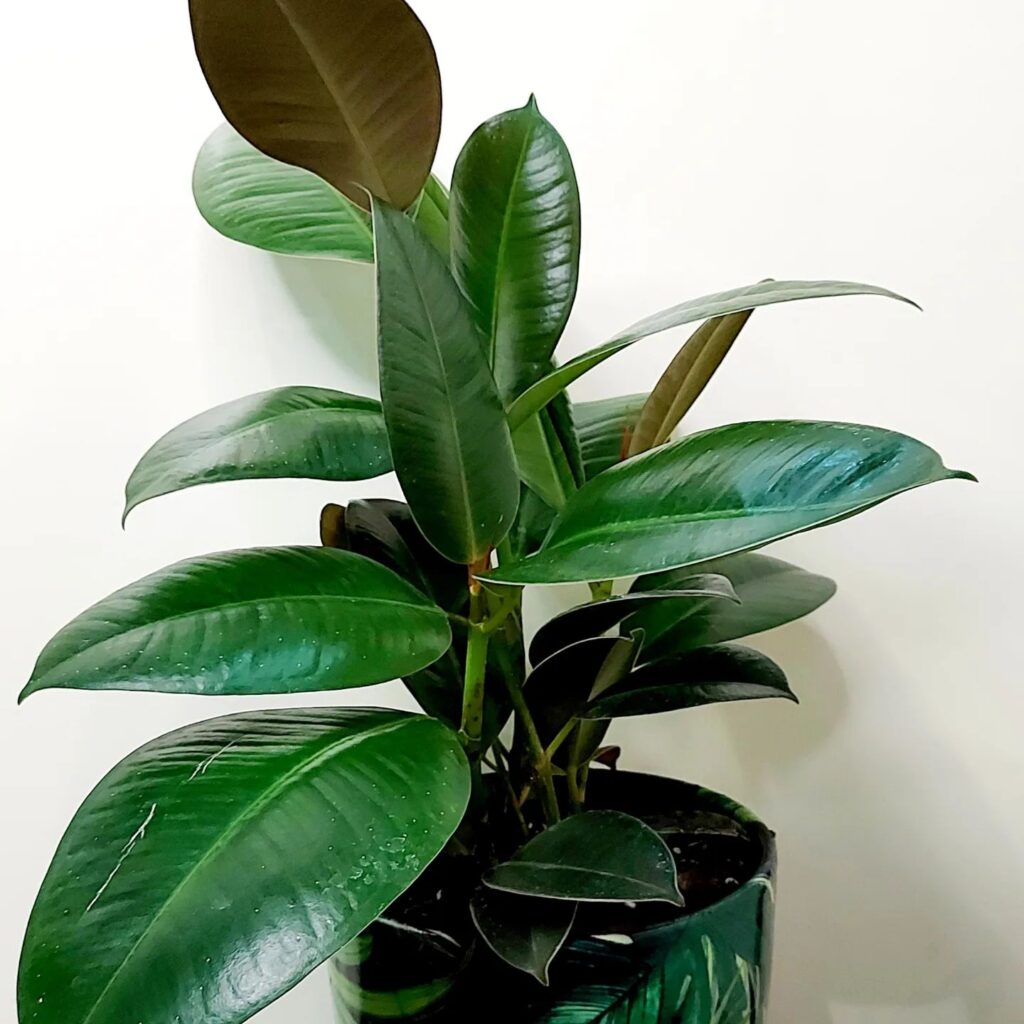
Rubber plant or Ficus elastica is a tree of the genus Moraceae native to southern tropical Asia. With its large, polished ovate leaves up to 10 inches long and young leaves wrapped in red valves as well as impressive dimensions, it is a focal point in any space.
Ficus elastica is extremely easy to grow, which is one of the main reasons for its worldwide popularity. As long as you meet its needs for light, moisture, and fertilizer, this plant will thrive indoors.
Although they can survive in low light conditions, a lack of natural light can result in falling leaves and increased stress for this houseplant, and too much sunlight harms its overall health in the same way.
Therefore, bright indirect light near the east-facing windows is the choice that will provide optimal conditions for its growth.
RELATED: How To Propagate Rubber Plant: Things To Know Beforehand
13. Bromeliads
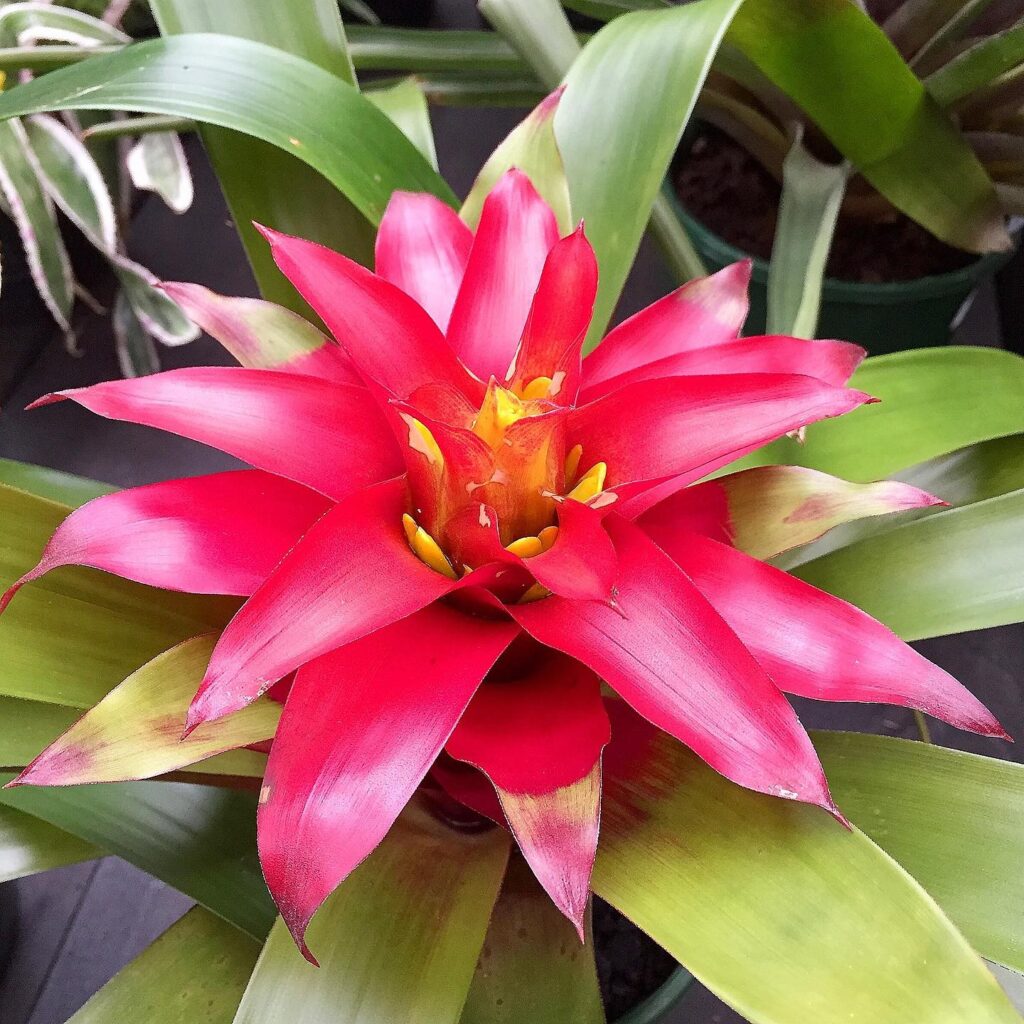
If you are looking for a plant that you will not have to worry too much about and that will look beautiful and thrive in a room with east-facing windows – the solution you are looking for might be bromeliads, modest tropical beauties that purify the air.
Most people know bromeliads by their unusual, intensely colored flowers with unique shapes and textures growing from the middle of a rich leaf rosette.
Although the flower is long-lived, the plant seems to have been “punished” for its beauty, so it dies after flowering. Therefore, to enjoy the magic of flowering again, you have to wait for the young shoots! Fortunately, they usually appear at the rosette base before the plant parents die.
Like other epiphytic species, Bromeliads prefer indirect light with a few hours of morning sun combined with high humidity.
Daily misting leaves and light fertilization with a balanced liquid fertilizer from spring to autumn will help keep the plant and flower longer.
14. Inch plant (Tradescantia)

Tradescantia is a genus of about 85 creeping or hanging plants of the Commelinaceae family, many grown as ornamental houseplants.
It is easy to grow and one of the few plants that will not rot if you overdo it with water.
Oval leaves grow from the long stems without a stalk that can be entirely green or dotted with yellow and silver stripes. The back of the leaf can be in pink and purple tones. During the summer, it blooms with small white flowers.
As the plant ages, it loses its beauty because it loses its leaves at the bottom of the stem, so it is best to renew it every two years. It is effortless to root with top cuttings.
For the best effect, place your Tradescantia in a bright place such as a west or east-facing window to prevent too long leafless stems and leaf paleness,
15. Philodendron
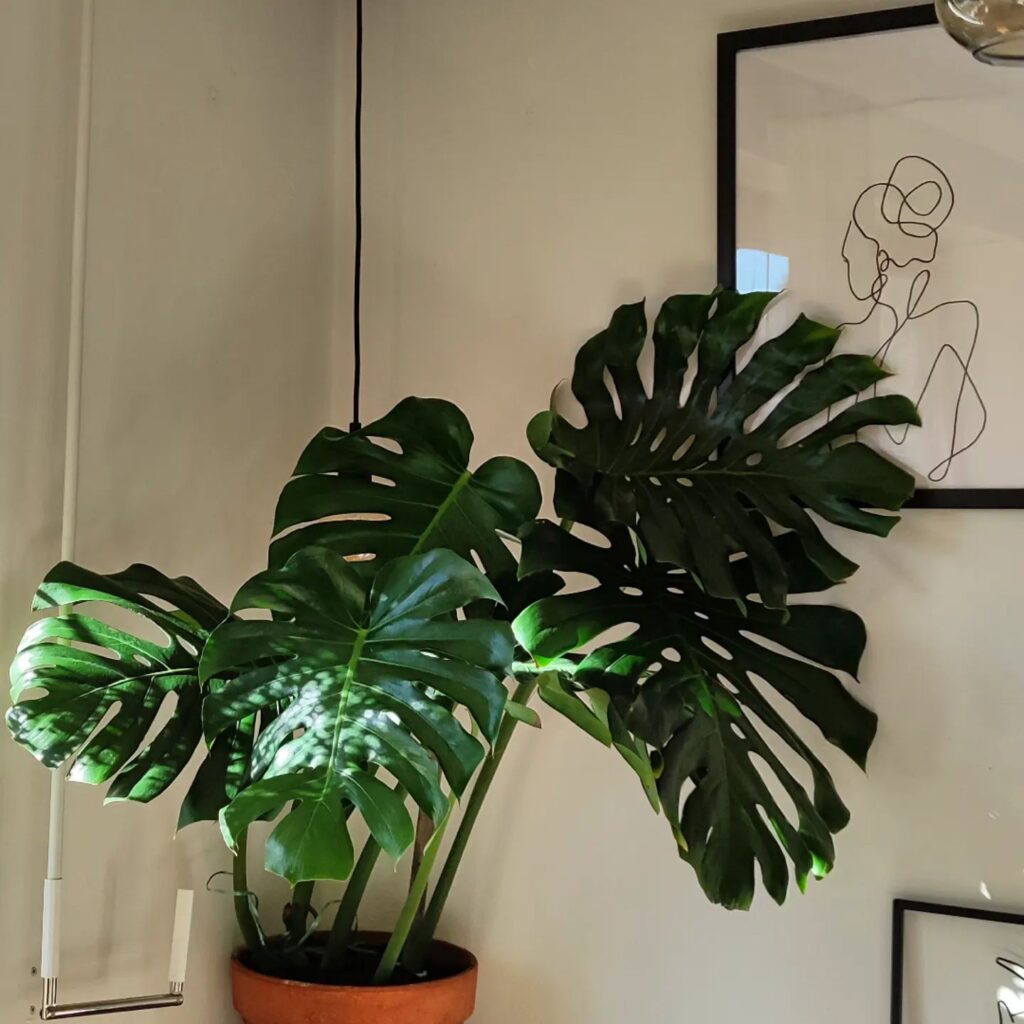
Philodendron is the common name for a plant genus from the Araceae family and includes more than 220 species of shrubs and creepers that originate from the tropics of America.
In its natural habitat, Philodendron grows, climbing along with the trees, with the help of a thick aerial root, which helps the plant to cling and serves to supply it with water and nutrients.
Along with Ficus, Monstera, or Philodendron, is one of the most popular houseplants worldwide.
Young plants have delicate light green leaves that are initially wrapped like cigarettes. The leaves open over time, take on a darker color, and recognizable, deep incisions appear on them.
Since Philodendron prefers bright indirect light, the east-facing window is ideal for growing this gorgeo
16. Fire Lily (Clivia Miniata)
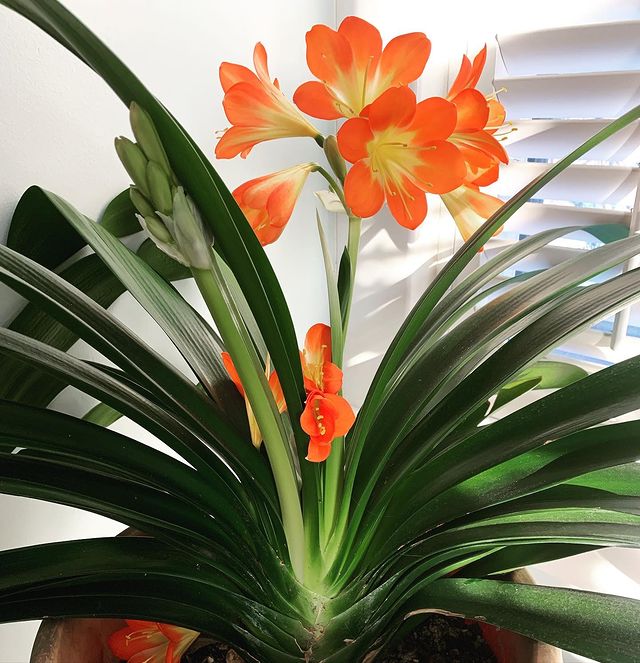
Another gem on our list of the best east-facing window plants, whose popularity dates back to the Victorian era, is the gorgeous Clivia miniata from the Amaryllidaceae family.
It is an excellent window plant because it does not grow more than 25 inches in height. Instead, it has 30 inches long and two inches wide, slightly bent dark green leaves that grow from a bulbous trunk. In addition, 10 to 15 flowers gathered in an inflorescence grow on one tall stem creating an irresistible floral performance.
With modest requirements but abundant flowering, this plant is certainly a welcome guest at any east-facing window where it can enjoy plenty of bright indirect light.
In winter, the plant needs rest and lower temperatures (up to 60 F) to bloom better in the spring. Yet, staying in a commonly heated space will not harm it.
Frequently Asked Questions
Is an east-facing window direct sunlight?
A: No. Direct sunlight is the lighting that space with a south-facing window gets. The east-facing window gives bright indirect light.
Can succulents grow on the east-facing window?
A: Yes. Although succulents prefer bright light, many can thrive on the east-facing window. Jade plants and Aloe vera lead the group.
Can Pothos grow on east-facing windows?
A: Yes. Pothos is a very adaptable plant and grows in different light conditions. East-facing provides enough light and protects from too much sun so that Pothos will grow well in this position!
Now that you know the best east facing windows plants, make sure to also check out our other tips:
16 Best West-Facing Window Plants – Afternoon Sun Loving Beauties







